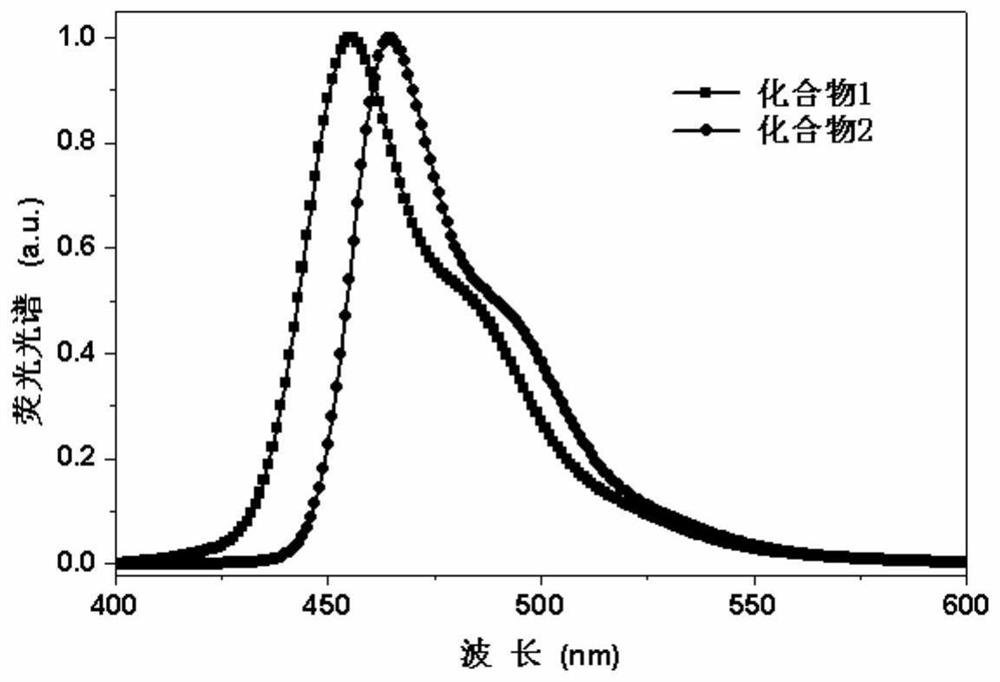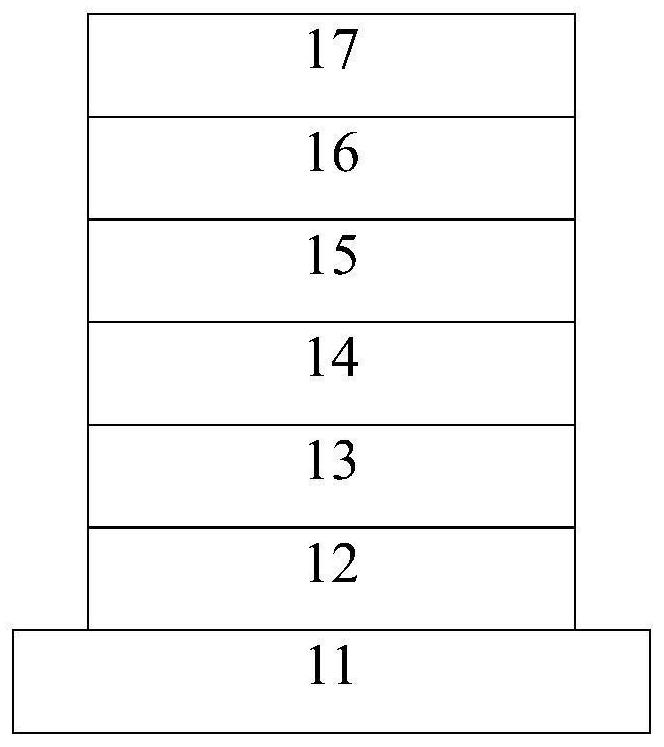A kind of fluorescent material and its synthesis method
A fluorescent material and synthesis method technology, applied in the field of organic light-emitting materials, can solve the problems of difficult carrier injection, limited application, poor carrier mobility, etc., to avoid the use of rare metals, strong fluorescent characteristics, and improve The effect of quantum efficiency
- Summary
- Abstract
- Description
- Claims
- Application Information
AI Technical Summary
Problems solved by technology
Method used
Image
Examples
Embodiment 1
[0057] This embodiment provides a deep blue fluorescent material (target compound 1), its structural formula is shown in formula (1-a):
[0058]
[0059] The synthetic route of target compound 1 is as follows:
[0060]
[0061] The synthesis method comprises the following steps: adding the reactant (6.99g, 10mmol) having the structural formula (2-a), 5mL concentrated hydrochloric acid and 15mL glacial acetic acid into a 50mL reaction vessel, and then reacting at 120°C for 24h. After cooling, pour into ice water, add 1mol / L sodium bicarbonate aqueous solution to neutralize the acid, then extract with dichloromethane (DCM) three times, wash with water three times, dry over anhydrous sodium sulfate, filter and concentrate. Using 200-300 mesh silica gel column chromatography with petroleum ether / DCM (4:1, V / V) as the eluent, 5.43 g of the target compound 1 was obtained as a white solid with a yield of 82%. 1HRMS[M+H]+calcd.for C50H34N2: 662.2722; found: 662.2734.
[0062] ...
Embodiment 2
[0064] This embodiment provides a deep blue fluorescent material (target compound 2), its structural formula is shown in formula (1-b):
[0065]
[0066] The synthetic route of target compound 2 is as follows:
[0067]
[0068] The reactant (6.99g, 10mmol), 5mL of concentrated hydrochloric acid and 15mL of glacial acetic acid were added into a 50mL reaction vessel, and reacted at 120°C for 24h. After cooling, pour into ice water, add 1mol / L sodium bicarbonate aqueous solution to neutralize the acid, then extract with dichloromethane (DCM) three times, wash with water three times, dry over anhydrous sodium sulfate, filter and concentrate. Using 200-300 mesh silica gel column chromatography with petroleum ether / DCM (4:1, V / V) as the eluent, 5.43 g of the target compound 2 was obtained as a white solid with a yield of 82%. 1HRMS[M+H]+calcd. for C50H34BN: 659.2784; found: 659.2798.
Embodiment 3
[0070] The target compound 1 and 2 and the traditional fluorescent material (Ref) shown in the formula (3) are subjected to photophysical test analysis, and the fluorescence emission spectrum is as follows figure 1 Shown; Parameters such as the electrochemical energy level of target compound 1 and 2 and Ref are measured, the lowest singlet state (S1) and the lowest triplet state energy level (T1) of target compound 1 and 2 and Ref and their energy level difference, And the test results of photoluminescence quantum efficiency PLQY are shown in Table 1 below.
[0071]
[0072] S1 is determined by room temperature fluorescence spectroscopy, T1 is determined by low temperature (77K) phosphorescence spectroscopy, and HOMO and LUMO are determined by electrochemical redox. Photoluminescence spectrum (photoluminescence, referred to as PL spectrum), PL peak refers to the strongest emission peak of the photoluminescence spectrum; PLQY was measured with the help of the Absolute PLQuan...
PUM
| Property | Measurement | Unit |
|---|---|---|
| quantum efficiency | aaaaa | aaaaa |
Abstract
Description
Claims
Application Information
 Login to View More
Login to View More - R&D
- Intellectual Property
- Life Sciences
- Materials
- Tech Scout
- Unparalleled Data Quality
- Higher Quality Content
- 60% Fewer Hallucinations
Browse by: Latest US Patents, China's latest patents, Technical Efficacy Thesaurus, Application Domain, Technology Topic, Popular Technical Reports.
© 2025 PatSnap. All rights reserved.Legal|Privacy policy|Modern Slavery Act Transparency Statement|Sitemap|About US| Contact US: help@patsnap.com



